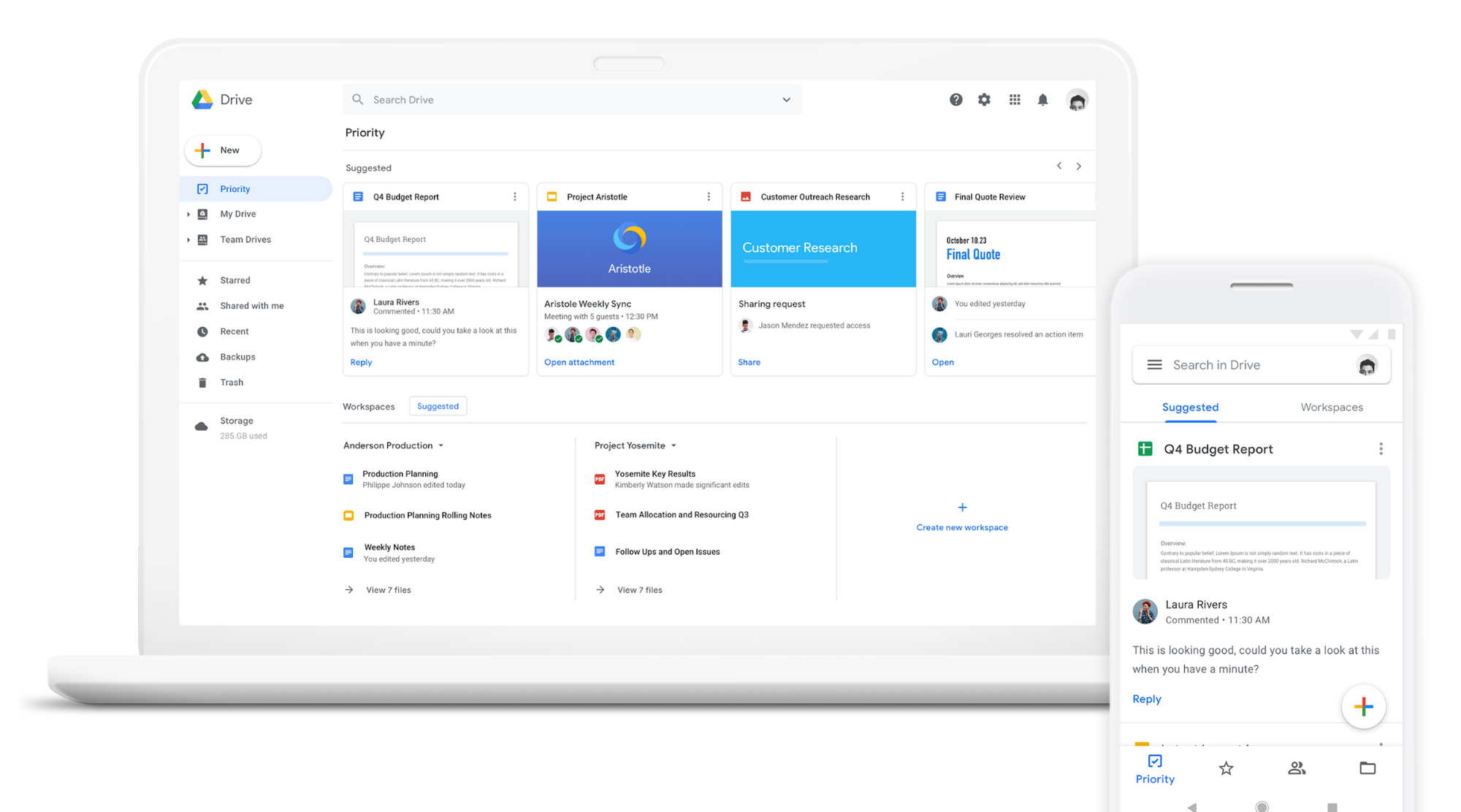How artificial intelligence in Google Drive helps you find files fast
Josh Smith
Product Manager, Google Drive
For your organization to perform its best, your employees need to be able to find, access and apply knowledge quicker than the rate at which your business is changing. Outside of raw data, a lot of your organization’s “knowledge” is likely contained within the content your employees create—think strategy docs, financial spreadsheets, customer presentations, and so on. The typical enterprise user has as many as 12,000 files saved in Google Drive. With so much information spread across your organization, it’s critical for workers to find relevant information fast.
To help, we’ve built longstanding features into Drive to help surface relevant files for you, including one of the latest features: Priority in Drive. Priority is located in the upper left of Drive’s homepage. It surfaces files and suggests actions you might want to take, plus lets you create dedicated workspaces to help you stay focused.


The results thus far have been promising. On average, Priority helps people find files twice as fast. When research shows that people spend nearly 20% of their time looking for internal information, that kind of time savings can make a big difference for your business.
How it works
Priority in Drive helps users move quickly thanks to Google’s advanced artificial intelligence (AI) and machine learning (ML).
The intelligence that makes Priority so helpful is actually powered by your own day-to-day actions. Every time you open a document, edit it, share it, comment on it, rename it and so on, it uses those signals to gauge its relative importance in the scope of all the content you’re working on. So if a coworker recently replied to a comment in a document that you’ve been working on, that file shows up as something you might want to take a look at within Priority. It takes into account things like recency, frequency, collaborators, and more to determine which files you’re most likely to be interested in working on in a given moment.
Priority uses these signals to not only surface the most relevant files, but also to intelligently suggest actions—things like replying to a comment, viewing an attachment, granting a contributor access, or approving a request. And in the workspaces section (located underneath suggested files), AI and ML help suggest working sets of files you might want to group together for easier access based on indicators like similar titles, content, or contributors.
Like any of the other intelligent features within apps you might use like Docs or Gmail, Drive only uses these context clues to surface information when you need it. It’s not used in any other way, or shared with other individuals inside (or outside) of your organization—not even your IT administrators.
Using artificial intelligence to help you focus on what matters
Instead of spending your time searching for the right information in Drive, or even organizing and categorizing your content, now you can spend more time on work that actually matters, like creating new content to inform business decisions. To learn more about how Drive can help you save time and stay focused, check out our website or read this article for more technical background.



